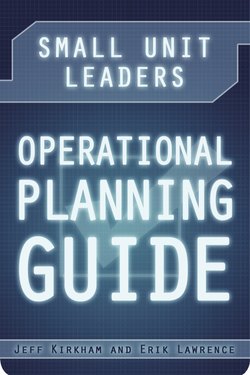Читать книгу Small Unit Leaders Operational Planning Guide - Erik Lawrence - Страница 7
TROOP LEADING PROCEDURES
Оглавление1.Receive the mission from Higher Command. WHO, WHAT, WHEN, WHERE, WHY. Can be verbal or written. Use the 1/3 (leaders planning time)/ 2/3 (subordinate preparation and rehearsal time) rule.
2.Issue the warning order to your unit. The order should con-tain the information located in the warning order format.
3.Make a Tentative Plan
The Five Steps to Making a Tentative Plan
•Commander’s intent
•Unit’s specific tasks and implied tasks
•Specific tasks are written out and directed in the Operation order.
•Implied tasks become apparent during mission analysis to ensure mission success.
•Limitations such as phase lines, equipment shortages, time requirements, etc.
•Mission-essential tasks that are required in order for success of the primary mission
•Restated mission statement that makes clear the mission-
essential tasks and purpose
-Who - Unit
-What - Tasks
-When - Critical Tim
-Where - Grid Coordinate and description of the objective
-Why - The purpose the unit must achieve
Overall, assess whether the plan is
Feasible?
Reasonable?
Distinguishable?
4.Start movement. Get everyone busy preparing for the mission and to receive the order.
5.Conduct recon. Put eyes on target, map, air, photos, human sources (intelligence), etc.
6.Complete the plan once you have all the information and write your operations order.
7.Issue the order.
8.Supervise.
SPECIAL CONSIDERATIONS FOR PLANNING IN A FIELD ENVIRONMENT:
•Planning in a field environment will likely reduce the amount of time leaders have for in-depth mission planning.
•The Troop Leading Procedures, if followed, will provide leaders a framework for mission planning in a time-constrained environment.
